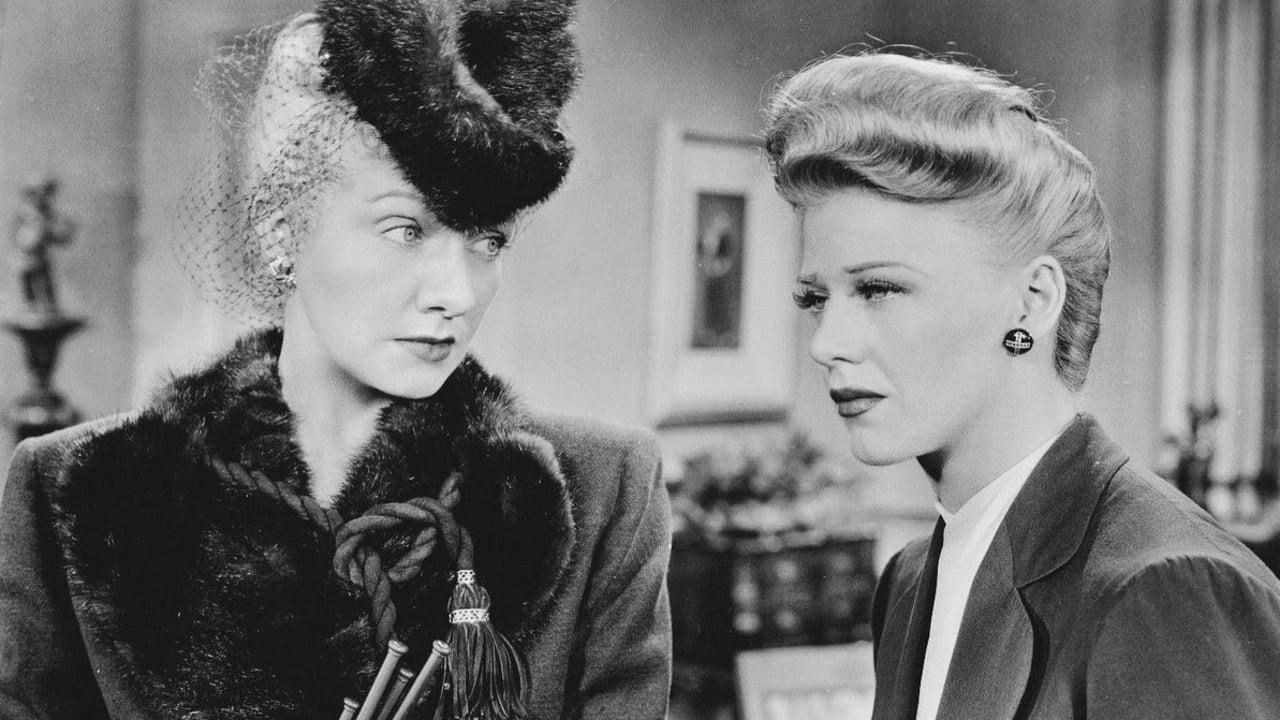

The lady is in the 'dark' about being a lesbian. Oh why can't somebody just say it. I guess you could on Broadway and with Gertrude Lawrence in 1940 but at Paramount in '44 with Ginger, well, she just had to stay in the dark and have repressed sexual dreams about her fur in a cage and her eggs at a circus (see the Jenny number) ... and see that dress she unfurls.. a vagina representation of ever I saw one on a movie screen that wasn't x rated. In this ultra glamorous dreamy musical film Ginger is a business woman in business attire (read: lesbian .....) and she is tormented between her real business and society's demands that she marry and be with a man. Hence dilemma, dreams and fur openings and the egg circus (see the Jenny number) ... the storyline demands she relate to a man when she does not want to hence the dream sequences of antagonism and sexual wonderings. Ray Milland is the sop she is deemed to marry when anyone from this century can see she really wants to stay in a women's world and stop being a frustrated big angry prowling pussy in a cage (see the Jenny number) .... Kurt Weill knew what he was on about and so do we... but Paramount, in masking it for the masses in '44 pushed the pussycat into the fantasy sequences, hired a gay director and let loose on the dreams and shot the lot in the best most stylish Technicolor you ever saw outside of YOLANDA AND THE THIEF and THE PIRATE. In this according to Paramount, all Ginger needed was a jolly good roger.... ing.....
... View MoreI was looking forward to seeing this film, because I had heard the wonderful Weill/Gershwin songs from the Broadway version. Much to my dismay, all but one-and-a-half of the songs were cut, and the storyline is one of the top-ten most sexist I have ever seen on the screen. I'm very surprised that only one other reviewer commented on that aspect of it! Ginger plays a publishing executive who [THIS IS PROBABLY A SPOILER BUT I MUST WRITE IT] "needs" to learn that she should dress up prettier (though her costumes are by Edith Head!), and let a man take over her business, otherwise she'll continue on her downward spiral toward insanity. Seriously. Ray Milland plays a jerk of the first water; I have never forgiven him. I was glad to hear from another reviewer that the Broadway show isn't this bad, but the movie should be avoided if this sort of thing upsets you at all. If you can laugh about it, you might enjoy the colors, the wacky 40's sets, and the foolish scenes where Ginger visits her idiot of a psychiatrist.
... View MoreGreat score mutilated, interesting stage libretto turned into an anti-feminist tract: It seems that our heroine, a successful and independent woman, needs a man to dominate her to be happy. (The stage version had the same basic story, but the rhetoric wasn't so vehemently misogynistic.) Ginger was more than a singer-dancer -- she could act, and had an Oscar to prove it -- but here her playing is dull and unimaginative. She, the art and costume and make-up departments, and the director seem concerned with two things only: the look of Ginger, and the look of the film. She looks fine, and the gaudy production design is a Technicolor riot, if not in the best of taste. The visual splendor makes the film worth seeing, but you'll have to tune a lot of nonsense out.
... View MoreAbout the only Kurt Weill-Ira Gershwin song included from the Broadway show about a lady advertising executive undergoing psychoanalysis is "The Saga of Jenny", but that is almost enough. Just why this film version appears lost to Television and Video viewers is a puzzle to me as well as a great pity. It was a great vehicle for Ginger Rogers, and as a story, both thoughtful and entertaining. Remember the line from the song, something like this: "Jenny made her mind up when she was twelve, that into foreign languages she would delve. But at seventeen at Vassar, it was quite a blow. In twenty-seven languages, she couldn't say no!" What a song!
... View More